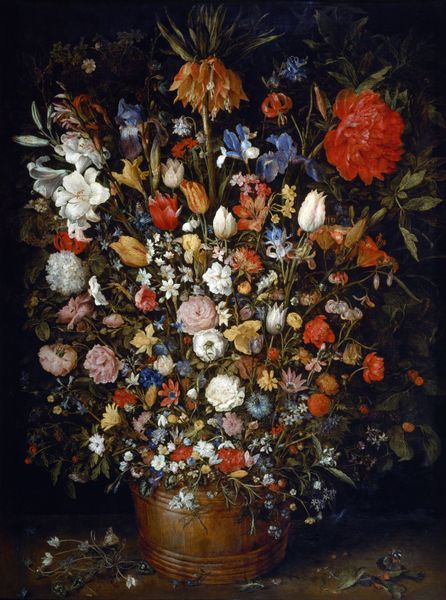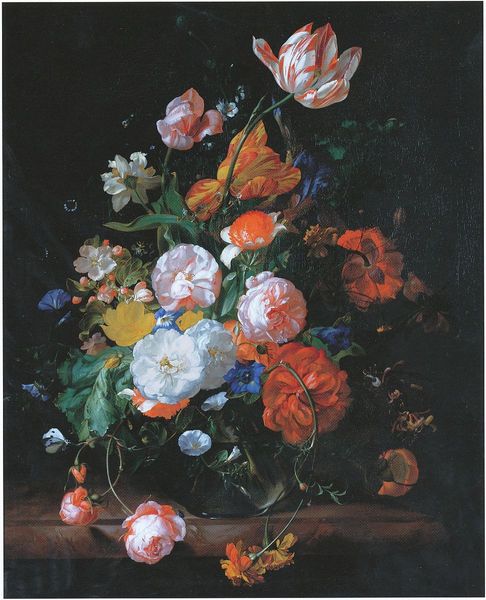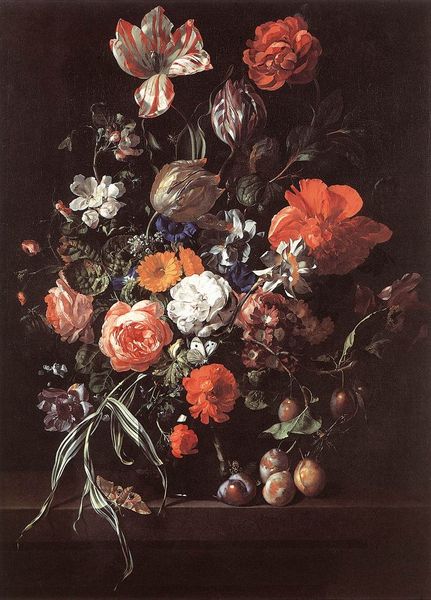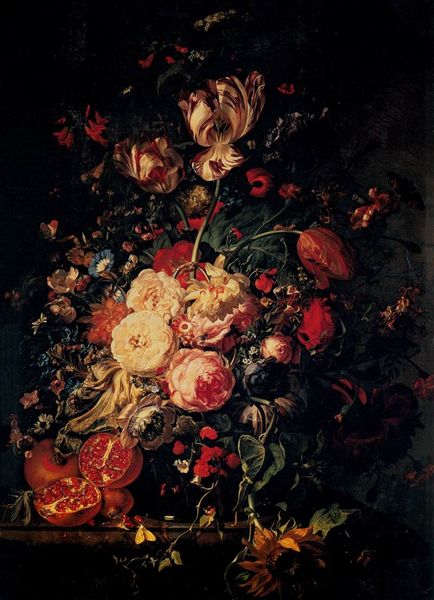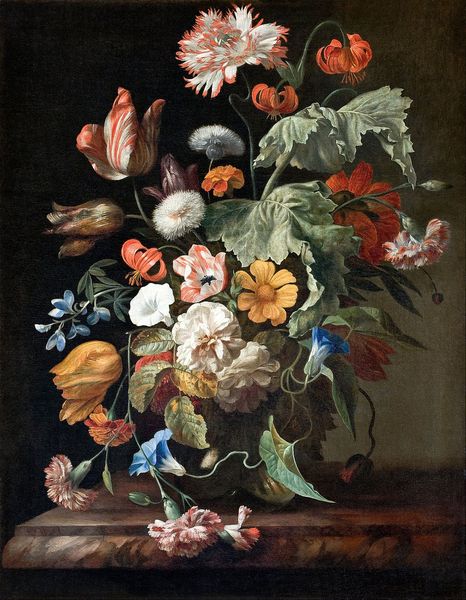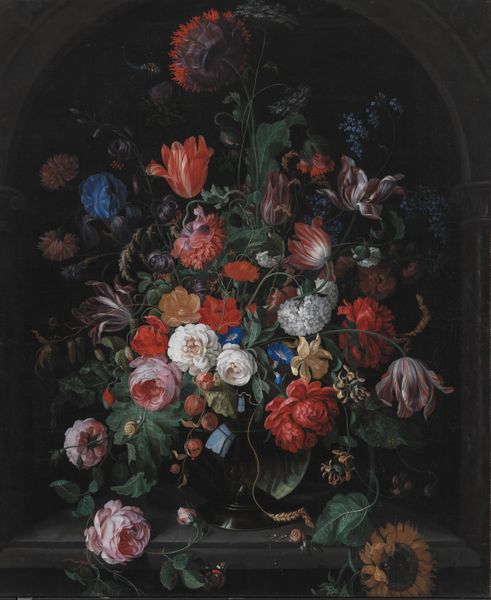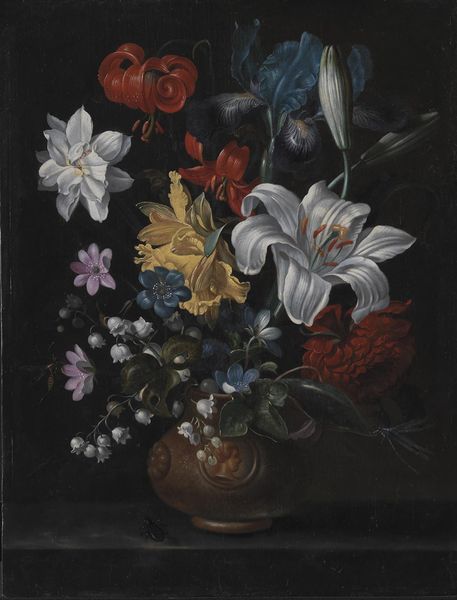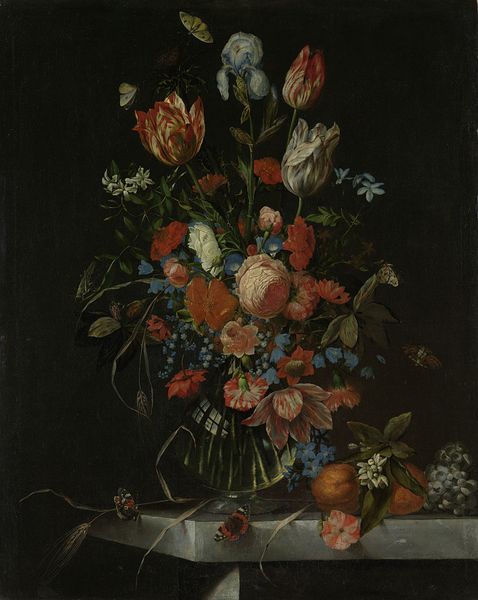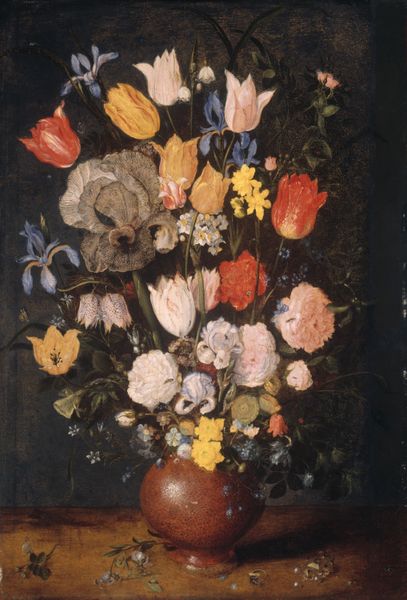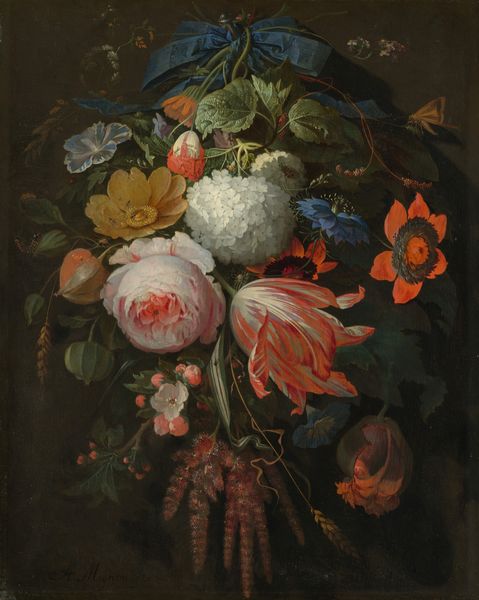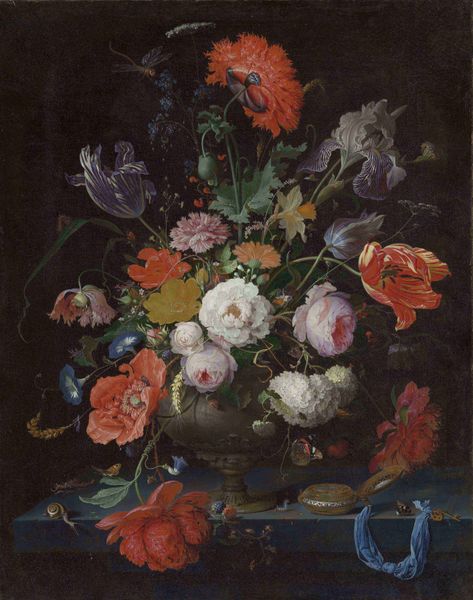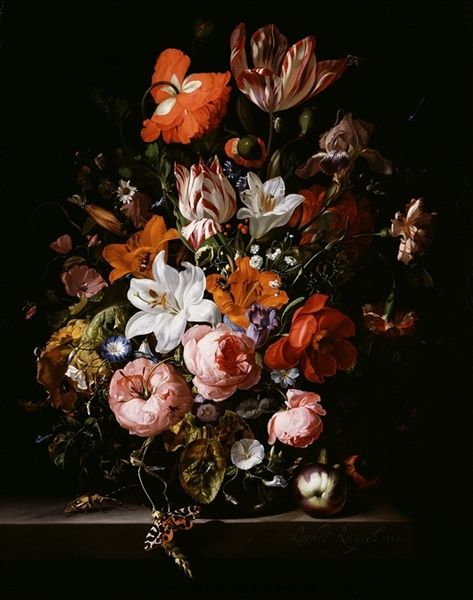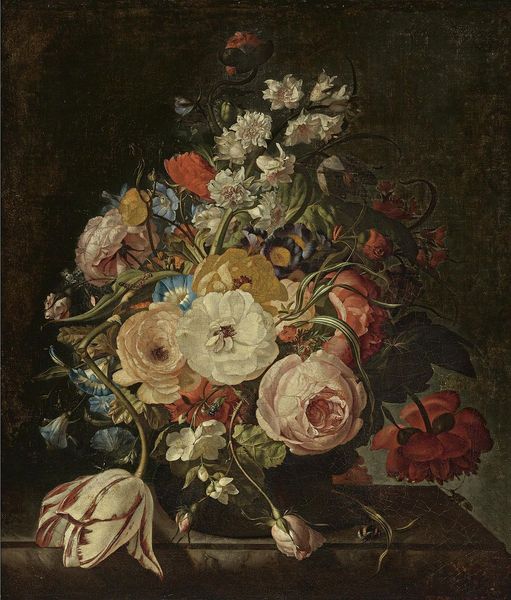
painting, oil-paint
#
portrait
#
garden
#
baroque
#
painting
#
oil-paint
#
oil painting
Copyright: Public domain
Editor: Here we have what’s known as "Bouquet in a Niche" by Osias Beert. It's an oil painting depicting flowers, possibly from the Baroque era. It looks pretty... dark, I would say. What do you see in this piece, considering the period it was made in and its potential social implications? Curator: The darkness you observe is fascinating, isn't it? These floral arrangements weren't simply pretty pictures. In 17th century Netherlands, especially, and given Beert's Flemish roots, consider the Dutch "tulip mania." Rare tulip bulbs held immense speculative value. Paintings like this, filled with blooms that bloom at different times of the year, became symbols of wealth, knowledge, and perhaps the hubris of man attempting to control nature. Note, too, how this abundance is presented in a niche, a space usually reserved for a religious icon. What does that juxtaposition tell us? Editor: So the flowers are presented almost like... deities? That’s an interesting take. I was mainly just focused on how aesthetically pleasing the painting is, but your point about their commercial and societal value makes me reconsider my first reaction. The fleeting nature of blooms juxtaposed with a devotional setting creates tension. Curator: Precisely! And think about the patrons commissioning such works. They were likely part of the rising merchant class, keen on displaying their new status. It’s a declaration of worldly success masked as innocent beauty. This gets further complicated by the butterflies: symbols of metamorphosis, beauty and the soul, also hinting at vanitas and, in turn, memento mori. In this sense the painting invites you to appreciate, or to be weary, of transient beauty and fortune. Editor: I definitely see the piece in a different light now. It’s much more than a pretty picture. It’s a symbol of an entire culture's values. Curator: And that's why, sometimes, it is crucial to engage with the cultural and socioeconomic conditions that shaped an artist and their creations. History helps us to engage critically with a picture, by unveiling those cultural contexts behind the work that inform its true and perhaps veiled meaning.
Comments
No comments
Be the first to comment and join the conversation on the ultimate creative platform.
